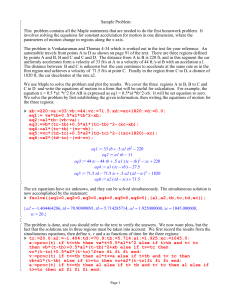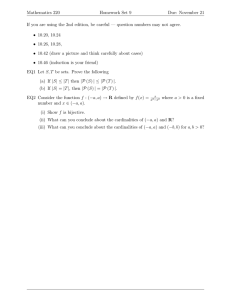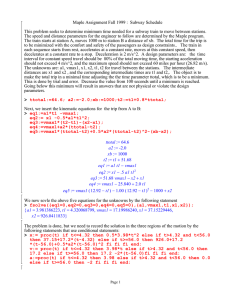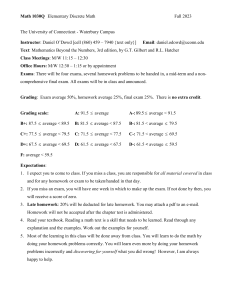Due to KVL, sets of circuit elements between two nodes are in
advertisement
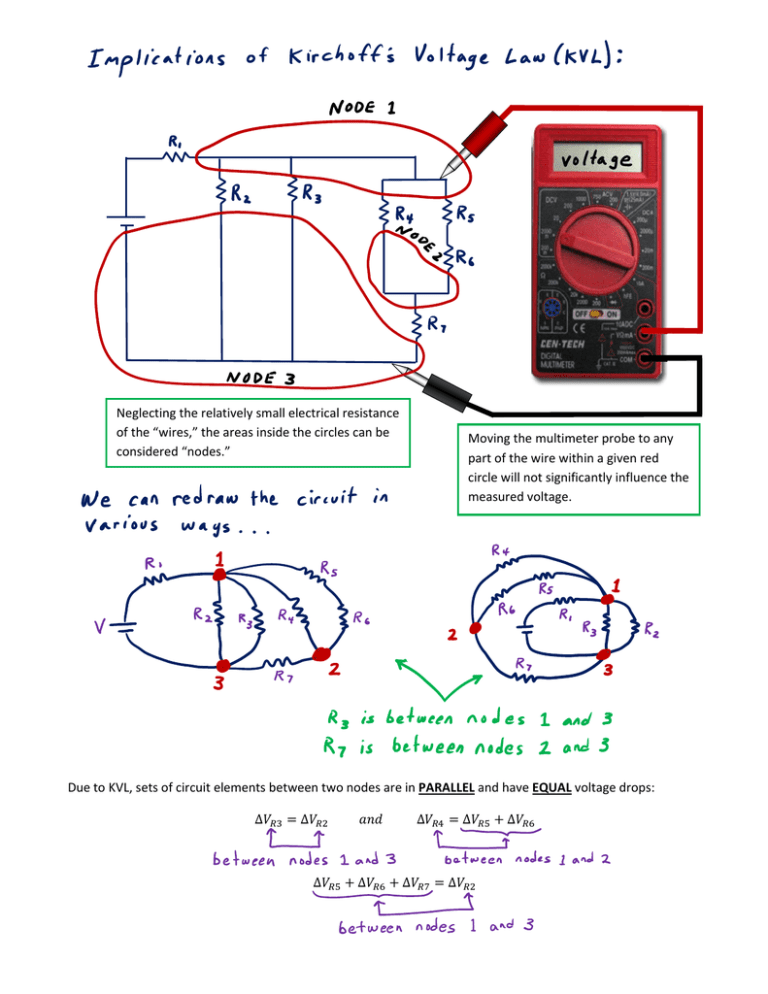
Neglecting the relatively small electrical resistance of the “wires,” the areas inside the circles can be considered “nodes.” Moving the multimeter probe to any part of the wire within a given red circle will not significantly influence the measured voltage. Due to KVL, sets of circuit elements between two nodes are in PARALLEL and have EQUAL voltage drops: Δ Δ Δ Δ Δ Δ Δ Δ Δ CLASS PROBLEM: Consider the circuit below where R2 is a variable resistor (a resistor whose value can be changed by turning a knob). We would like to understand the variation of the total current leaving the power sources as a function of R2. a. Redraw the circuit so it is easier to tell which resistors are in parallel. b. Develop a function for the current I in terms of the resistance R2, and embed this function into Mathcad. c. Plot the current versus the value of R2, where R2 varies from 100 Ω to 10,000 Ω. d. Find the current when R2 is equal to 220 Ω, 470 Ω, 1 kΩ, and 10 kΩ. Mathcad Example of Functions and Plots: Keystrokes R1 := 10000⋅ Ω R.1 : 10000* <enter> R3 := 220⋅ Ω R.3 : 220* <enter> R4 := 470⋅ Ω R.4 : 470* <enter> R5 := 220⋅ Ω R.5 : 470* <enter> R6 := 470⋅ Ω R.6 : 470* <enter> V 1 := 12 ⋅ V V.1 : 12*V <enter> V2 := 9⋅ V V.2 : 9*V <enter> V.3 : V.1 + V.2 V3 := V1 + V2 Req1 := 1 R3 R.eq1 : 1 / 1 / R.3 <space> + 1 / R.5 <enter> 1 + 1 R5 R.eq2 : R.4 + R.eq1 + R.6 R eq2 := R 4 + R eq1 + R 6 ( ) Req3 R2 := 1 R1 1 + 1 R2⋅ Ω R.eq3(R.2) : 1 / 1 / R.1 <space> + 1 / R.2* <space> + + 1 1 / R.eq2 <enter> Req2 I(R.2) : V.3 / R.eq3(R.2) <enter> V3 I R2 := Req3 R2 ( ) ( ) R.2 : 100 , 110 ; 10000 <enter> R2 := 100 , 110 .. 10000 To insert the plot: Insert > Graph > XY Plot Type in R.2 and I(R.2) in the placeholders Keystrokes 0.3 0.2 ( ) I R2 0.1 0 0 2×10 3 4×10 3 6×10 R2 3 8×10 3 1×10 4 I( 220) = 0.118A I(220) = I( 470) = 0.067A I(470) = I( 1000) = 0.043A I(1000) = I( 10000) = 0.024A I(10000) =
